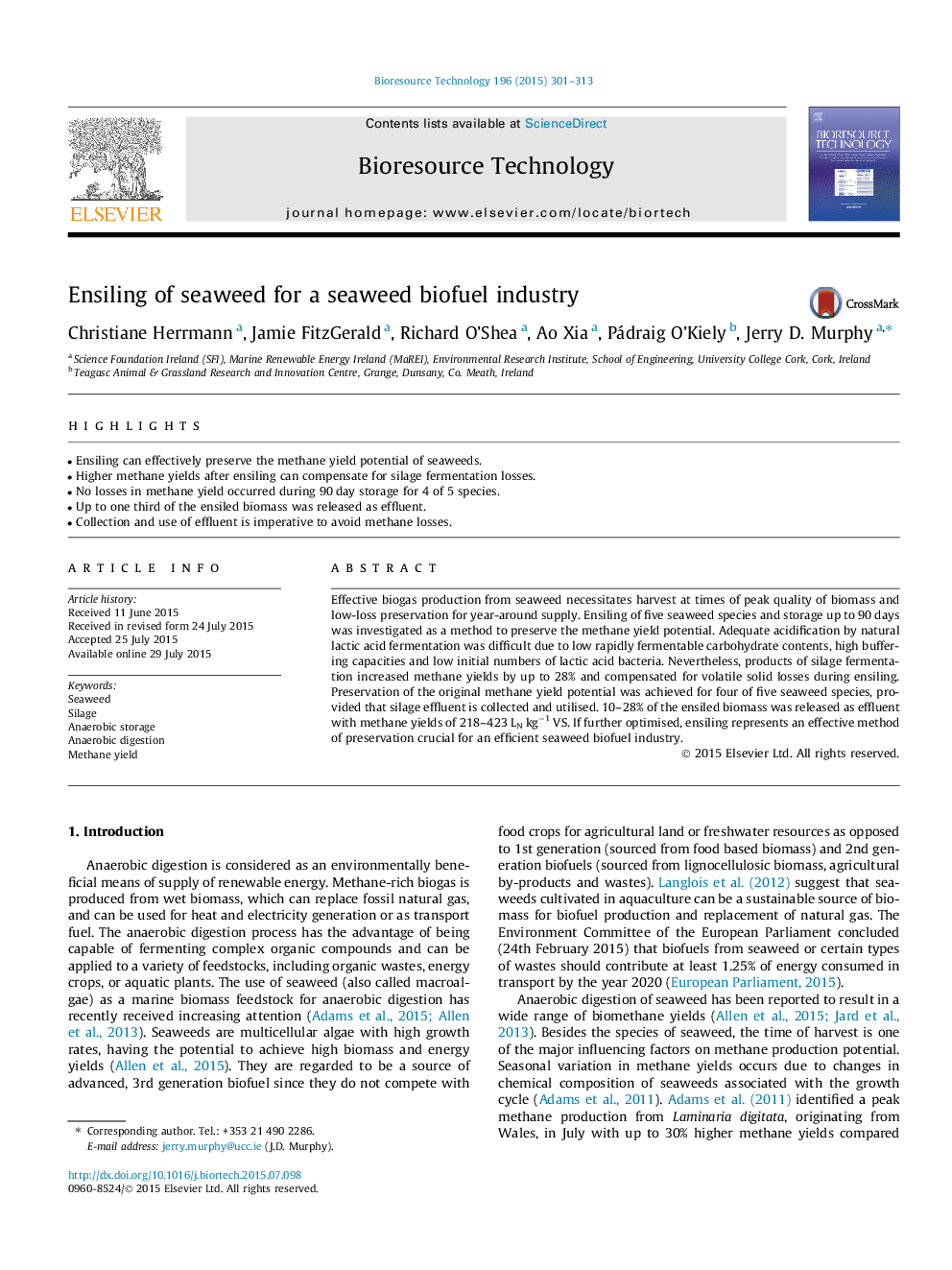| Article ID | Journal | Published Year | Pages | File Type |
|---|---|---|---|---|
| 7073676 | Bioresource Technology | 2015 | 13 Pages |
Abstract
Effective biogas production from seaweed necessitates harvest at times of peak quality of biomass and low-loss preservation for year-around supply. Ensiling of five seaweed species and storage up to 90Â days was investigated as a method to preserve the methane yield potential. Adequate acidification by natural lactic acid fermentation was difficult due to low rapidly fermentable carbohydrate contents, high buffering capacities and low initial numbers of lactic acid bacteria. Nevertheless, products of silage fermentation increased methane yields by up to 28% and compensated for volatile solid losses during ensiling. Preservation of the original methane yield potential was achieved for four of five seaweed species, provided that silage effluent is collected and utilised. 10-28% of the ensiled biomass was released as effluent with methane yields of 218-423Â LNÂ kgâ1 VS. If further optimised, ensiling represents an effective method of preservation crucial for an efficient seaweed biofuel industry.
Related Topics
Physical Sciences and Engineering
Chemical Engineering
Process Chemistry and Technology
Authors
Christiane Herrmann, Jamie FitzGerald, Richard O'Shea, Ao Xia, Pádraig O'Kiely, Jerry D. Murphy,
